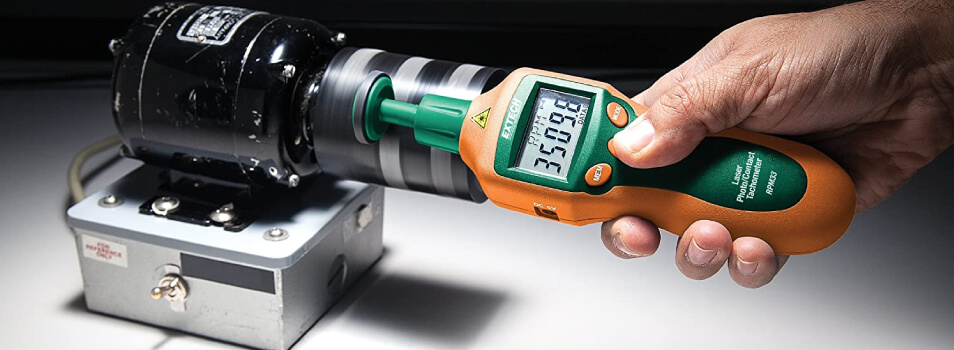
What is a Tachometer Gauge and How Does It Work?
Share
The world of automotive and engineering technology is filled with specialized tools and instruments, among which the tachometer gauge stands out as an essential device for many tech professionals and enthusiasts. If youve ever wondered what is a tachometer gauge and why it matters, youre in the right place. This article delves deep into its functionality, applications, and importance in both automotive and aerospace industries.
A tachometer gauge is used to measure the rotational speed of an engines crankshaft and is usually expressed in revolutions per minute (RPM). It provides critical information that can influence driving performance, mechanical adjustments, and even the longevity of engines. Understanding how a tachometer works not only aids in the maintenance of vehicles but also enhances the overall driving experience.

The Basics of Tachometer Gauges
To grasp the concept of a tachometer, one must first consider its origin and development. Historically, tachometers have evolved from mechanical devices to sophisticated electronic systems, reflecting advances in technology. These devices are integral in helping both professional mechanics and technology enthusiasts optimize performance under various conditions.
A typical tachometer gauge consists of the following components:
- Input Signal: It can be mechanical or electricalusually, modern tachometers utilize an electrical signal received from the ignition system.
- Display: The tachometer can feature an analog needle or a digital readout, providing instant feedback to the user.
- Calibration: Precision is critical. The gauge must be calibrated to ensure an accurate representation of engine speed.
How Does a Tachometer Gauge Function?
To understand what a tachometer gauge does, it is crucial to explore how it functions. The operation of a tachometer is based on the principle of measuring the frequency of electrical pulses generated during the engine's operational cycle. Here are the crucial parts and processes involved:
- Sensor Detection: When the engine runs, it generates a certain number of volts, which convert the mechanical motion into an electrical signal.
- Pulse Transition: Each pulse corresponds to a specified number of revolutions.
- Output Processing: The tachometer gauges the output of these pulses and translates them into a readable format, indicating the RPM.
Applications of Tachometer Gauges
Tachometer gauges have a variety of applications across different fields:
- Automotive Industry: Primary use is in vehicles, providing drivers with a real-time measure of engine speed, essential for optimizing performance.
- Aerospace: In aircraft, tachometers measure the speed of rotating machinery, such as propellers and jet engines, ensuring safe operation.
- Industrial Machinery: Used extensively in factories to monitor the rotation of motors and generators, optimally adjusting performance according to load.
Understanding Different Types of Tachometers
When discussing what is a tachometer gauge, its essential to mention the different types available:
- Mechanical Tachometers: Driven by a cable using the engine crankshaft for measurement.
- Electronic Tachometers: They use electrical sensors for more accurate readings and are often incorporated into modern vehicles.
- Digital Tachometers: Offer a digital display and can often interface with computers for data analysis.
Installing a Tachometer: Step-by-Step Guide
If you're considering installing a tachometer, understanding how to install a tachometer RPM gauge is paramount. Here are the steps to guide you through the process:
- Gather Tools: You will need basic tools like a wrench, screwdriver, and wire strippers.
- Prepare Mounting Location: Choose a spot on your dashboard where you can easily see the gauge.
- Connect Wires: Following manufacturer instructions, connect the wire for signal input, power, and ground.
- Test: Before full installation, test the connection to ensure everything is working properly.
- Secure: Finally, secure the gauge into place and ensure it is functioning as expected.
Troubleshooting Tachometer Issues
Just like any instrument, tachometers can experience issues ranging from inaccurate readings to complete failure. Understanding how to test a tachometer is crucial for both maintenance and troubleshooting. Here is a brief guide on common problems and their solutions:
- Inaccurate Reading: Check the connections and ensure there are no breaks in the wire.
- No Reading: Confirm that the tachometer is getting power. Replace fuses if necessary.
- Intermittent Reading: Look for loose connections or issues with the signal sensor.
Why Tachometer Gauges Matter
Understanding what a tachometer gauge is and its operations can change the approach taken towards vehicle maintenance and performance optimization. It allows users to:
- Monitor Engine Performance: RPM readings inform drivers of the engine's operational state.
- Prevent Engine Damage: Awareness of maximum RPM limits helps avoid potential engine failure.
- Optimize Fuel Consumption: Understanding engine revs can lead to better fuel efficiency.

Conclusion
The tachometer gauge is not merely an accessory; it is a critical instrument that influences how engines perform and how effectively they are managed. Whether you are a tech enthusiast or a professional mechanic, understanding what is a tachometer gauge enhances your capability to maintain and optimize vehicle performance. As technology continues to advance, so too will the capabilities and features of tachometers, ensuring they remain an indispensable tool in the world of automotive and engineering technologies.
FAQs
- What is a tachometer gauge commonly used for? - Tachometer gauges monitor engine speed in RPM, crucial for vehicle performance.
- Can a tachometer gauge be installed in any vehicle? - Generally, yes, but the installation process may vary based on vehicle type.
- How do I calibrate a tachometer? - Calibration can involve adjustments based on the vehicle's specifications and settings.
For additional reading on tachometers, you may also find this Azosensors article insightful.
